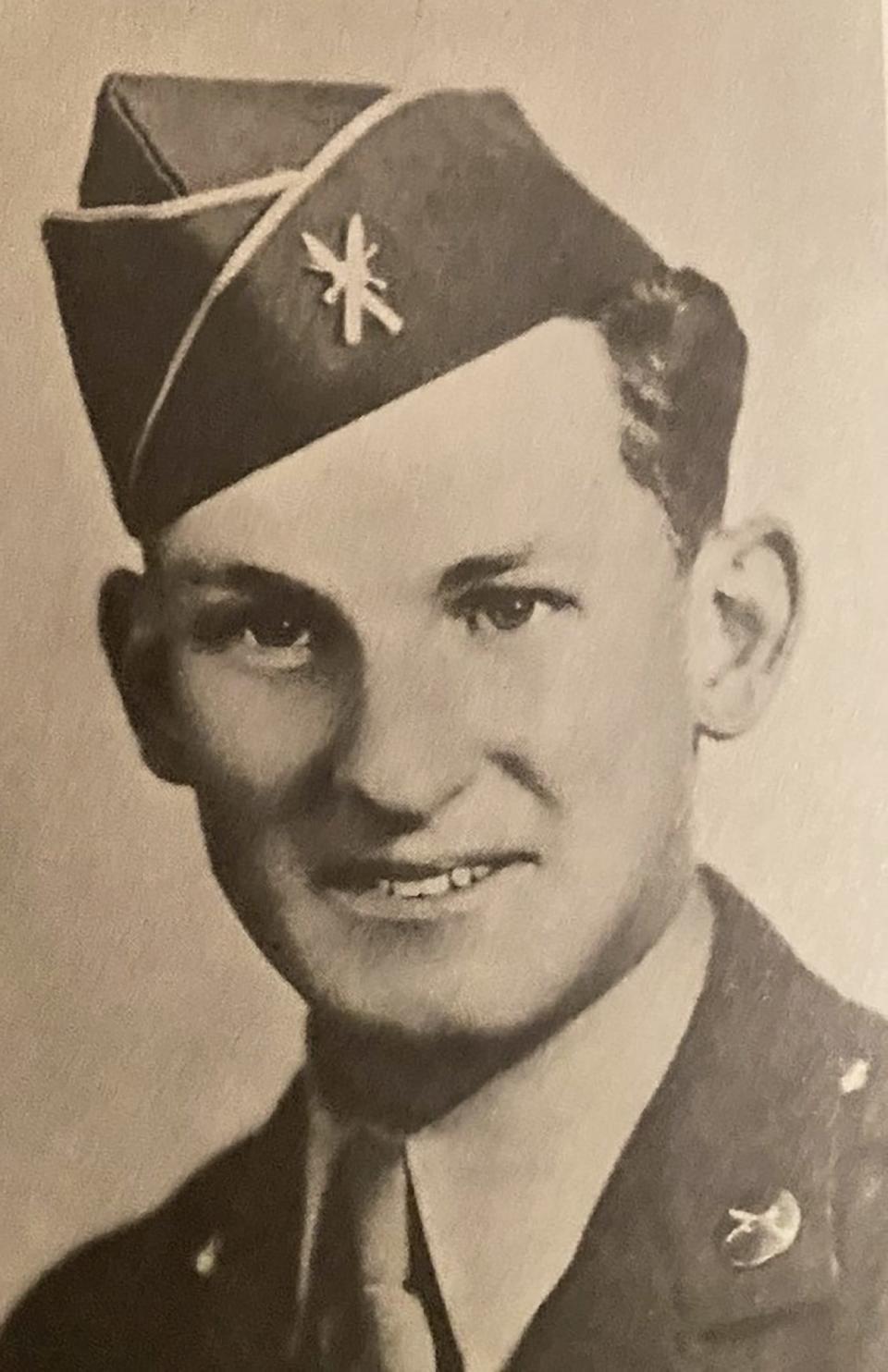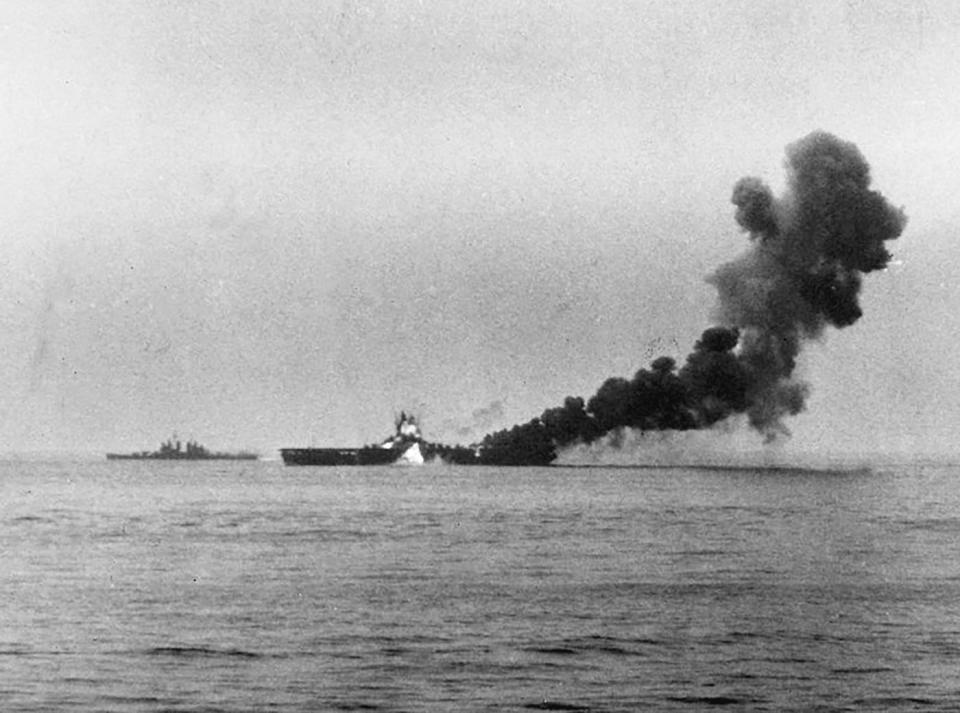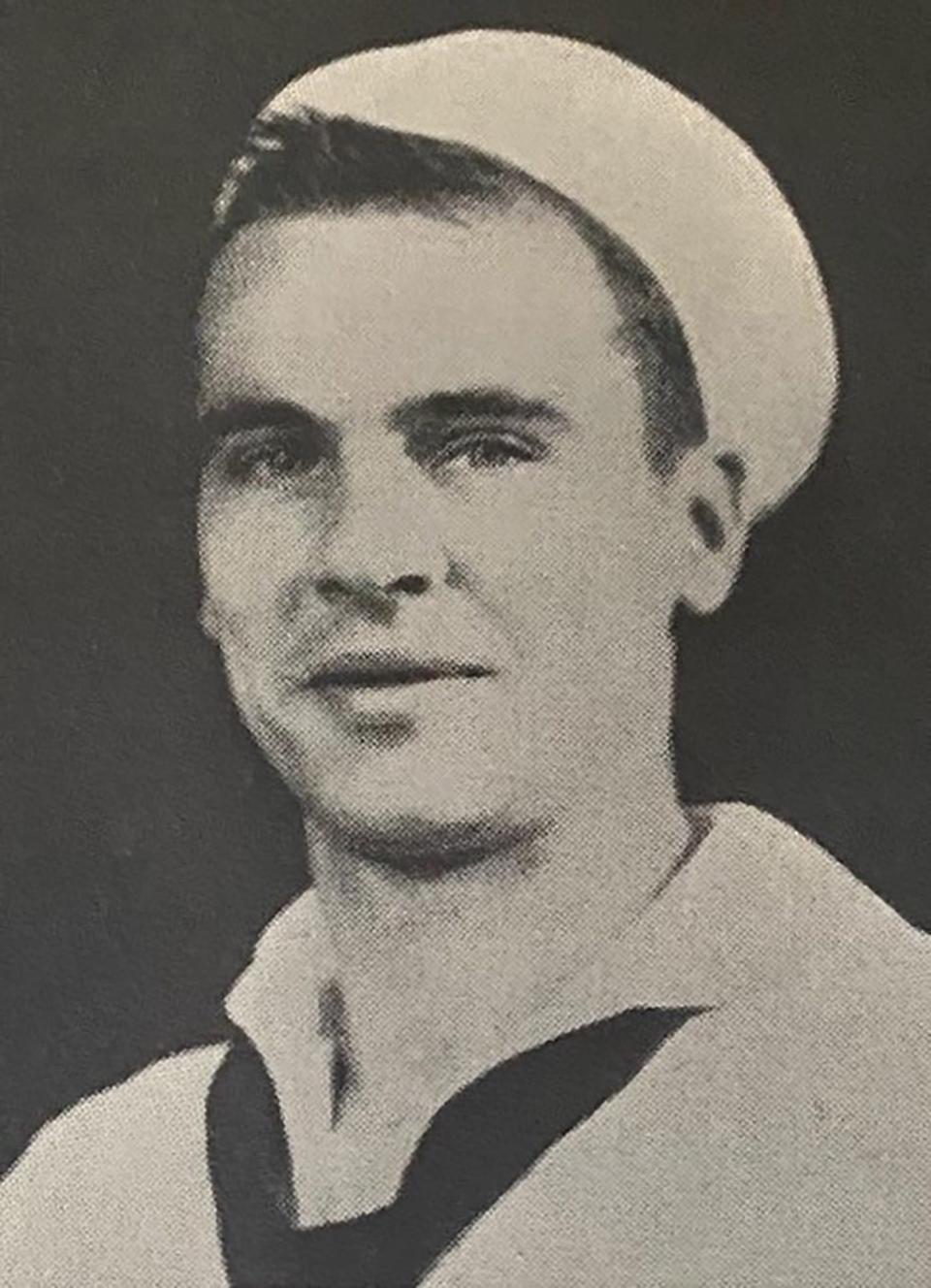Remembering Local World War II Heroes: Charles Whitney, Anthony Zekonis
Of all the wartime atrocities, there are few as shocking and unconscionable as a kamikaze suicide attack. One of the most devastating of those targeted the USS Bunker Hill aircraft carrier on the morning of May 11, 1945.
World War II was in its final months when the Bunker Hill was covering the U.S. invasion of the Japanese island Okinawa.
Suddenly, from out of a low cloud cover, a Mitsubishi A6M Zero fighter plane emerged and began an abrupt dive toward the flight deck, unloading a 550-pound bomb that penetrated the deck and exited the hull to explode in the sea. The Japanese fighter continued its descent and slammed directly into the flight deck, according to Wikipedia.
Parked warplanes aboard the carrier filled with ammunition and fuel erupted into a raging fire.
Then, some 30 seconds later, the unthinkable happened when another Zero fighter began its own suicide plunge and headed directly for the stricken Bunker Hill. First came the bomb, followed seconds later by the kamikaze plane, which struck near the carrier’s “island.”
The bomb exploded in the pilots’ ready room, killing 22 members of squadron VF-84.
In all, the Bunker Hill lost 393 sailors and airmen, including 41 who went missing and were never found, while another 264 were wounded, according to Wikipedia. The ship was heavily damaged and returned to the U.S. for repairs.
Of those lives claimed aboard the Bunker Hill was a Gardner man. Another soldier from the city met his death in the midst of the Third Army’s drive toward the Rhineland in Europe.
This is the continuation of the series Remembering Local World War II Heroes.
Pfc. Charles E. Whitney (1924-1944)
Charles Evans Whitney was born in Gardner on Jan. 27, 1924, the son of Charles Amasa and Marian E. (Evans) Whitney. The family lived at 125 Pearl St. where his father was a bookkeeper at Heywood-Wakefield Co.

In 1934, when young Charles was only 10, his mother died at the age of 38 following an illness of several months. Prior to marrying Charles A. Whitney, she taught domestic science at Gardner High School.
His father, Charles, later remarried Janice MacLean. By the early 1940s, Mr. Whitney was appointed city treasurer of Gardner.
Young Charles attended Gardner High School where he was a member of the basketball, swimming and ski teams, graduating in the Class of 1941. He was also active in Scouting in Gardner during his youth, as well as in various youth organization activities at the First Congregational Church.
After his high school graduation, Whitney attended Worcester Polytechnic Institute but left in the middle of his second year there to enlist in the Army.
He entered military service at Fort Devens on March 12, 1943, and received his basic training at Camp Croft, S.C. He would go on to join the ski troops, receiving his training at Camp Hale, Colo.
Whitney was then sent to the engineering school at Harvard University before being transferred to Fort Jackson, S.C., with Company K, 101st Infantry Regiment, 26th Infantry Division. In August of 1944, he left for the European theater with the 101st Infantry.
Whitney took part in the northern France and the Rhineland campaigns.
On Nov. 20, 1944, the 26th was attacking a German position northeast of Nancy, France, during the Third Army drive toward the Rhineland. Whitney was wounded at Torchevilla, France, and died six days later of his wounds in the American military hospital on Nov. 26.
He was buried in the American Military Cemetery at Limey-Remenauville, France, and also has a stone in his honor at Crystal Lake Cemetery.
Whitney was the first member of his class at Worcester Polytechnic Institute to die in combat. In addition, he was the first son of a member of the Gardner Post of the American Legion to lose his life in World War II.
Aside from his father and stepmother, he was survived by two sisters, Elizabeth Gray and Barbara Ann Griffin.
Among his awards were the Purple Heart, EAME Campaign Ribbon with two battle stars, Presidential Unit Citation, American Theater Ribbon, Good Conduct Ribbon, Expert Infantryman Badge and World War II Victory Medal.

Petty Officer 3rd Class Anthony J. Zekonis (1911-1945)
Anthony J. Zekonis was born in Jersey City, N.J., on Dec. 29, 1911, the son of Joseph and Sally (Tarasowech) Zekonis. He attended schools in Jersey City as well as Lithuania, where he moved with his parents. Zekonis returned to the States and lived in Brooklyn, N.Y.
He married the former Elizabeth Granski and they lived at 85 Olney St. in Gardner in the same two-family home of her parents. Zekonis worked as an upholsterer at Heywood-Wakefield Co. where his wife also worked.

Zekonis entered naval service at Boston on June 21, 1943, and received his basic training at Newport, R.I. Three months later, he was sent to the Pacific theater on Sept. 9, 1943.
As a member of the Navy, he took part in many battles and campaigns, such as Rabaul, Gilbert Islands, Bismarck Archipelago, Marshall Islands, Truk, New Guinea, Palau, Saipan and Tinian, Iwo Jima, Bonin Islands (landing and ground support), Okinawa and the southern Philippines.
Finally, he was a crewman aboard the USS Bunker Hill, which was supporting the invasion of Okinawa.
On May 11, 1945, while aboard the Bunker Hill, Zekonis was fatally wounded when the ship was attacked twice within one minute by Japanese suicide planes. Zekonis was transferred to another ship but died the same day of his wounds.
Two other Gardner men, Morris Sandrof and Toivo E. Tantuu, had also served on the Bunker Hill but fortunately were not aboard the ship at the time of the attack.
Zekonis was awarded the Asiatic-Pacific Area Ribbon with 11 engagement stars, Philippine Liberation Ribbon with two stars, World War II Victory Medal and the Presidential Unit Citation.
Zekonis was buried at sea will full military honors. He is also listed on the marker at the Honolulu Memorial in Hawaii.
Comments and suggestions for Remembering Local World War II Heroes can be sent to Mike Richard at mikerichard0725@gmail.com or in writing to Mike Richard, 92 Boardley Road, Sandwich, MA 02563.
This article originally appeared on Gardner News: Remembering World War II Heroes: Charles Whitney, Anthony Zekonis
